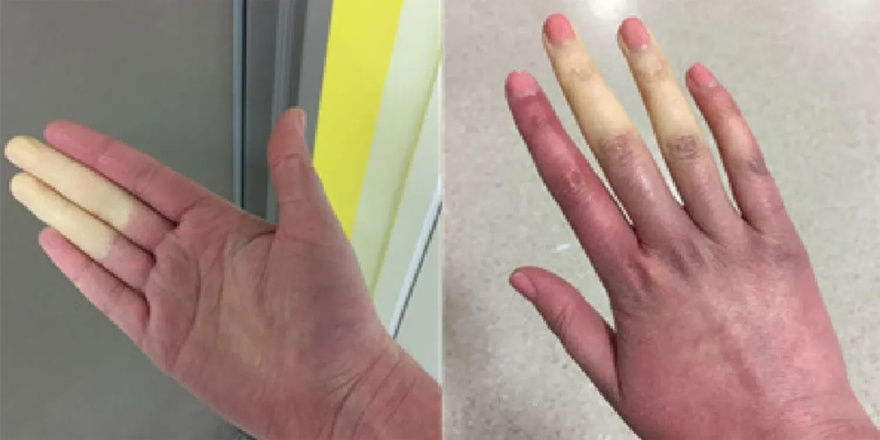What symptoms should I look for?
Dr. James O’Donovan, a health and aging specialist, warns about the syndrome’s typical symptoms:
Color change: As the skin warms, it changes from white to blue and occasionally to red.
The sensation of extreme cold in the fingers or toes.
Numbness, tingling, or transient loss of sensation.
Other parts may be impacted, such as the nose, lips, or ears.
Most people experience moderate symptoms, which are unpleasant but not dangerous. However, in other circumstances, they may signify a more significant health
When should you worry?

-If the symptoms are extremely severe or intensify over time.
-If you are over 40 and experiencing this for the first time.
-If just one hand or foot is afflicted.
-If you also have joint discomfort, rash, or muscular weakness.
-If, even after warming, a region remains pale, uncomfortable, or numb for several hours.
An often neglected element is that a ring caught on a swollen finger can swiftly lead to complications and a medical emergency.
The first thing to do is gradually warm your extremities. Put your hands in your pockets, gently blow on them, or soak them in warm water (not hot, to avoid thermal shock).
Also, take some basic steps to prevent crises:

-Reduce stress, as this can also cause symptoms.
-Avoid coffee, smoke, and certain vasoconstrictor medicines, which might worsen spasms.


